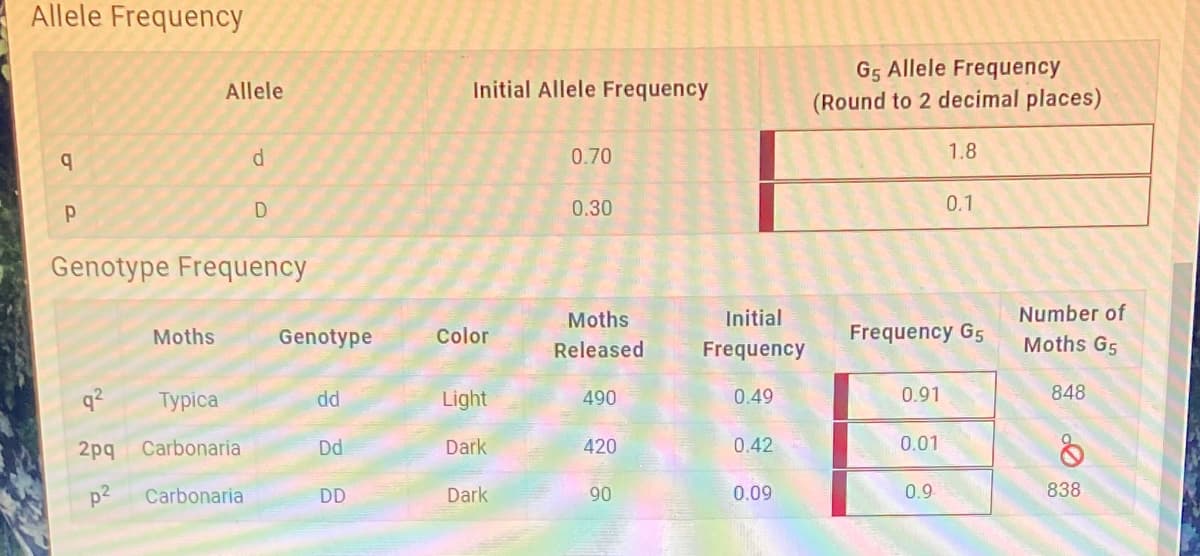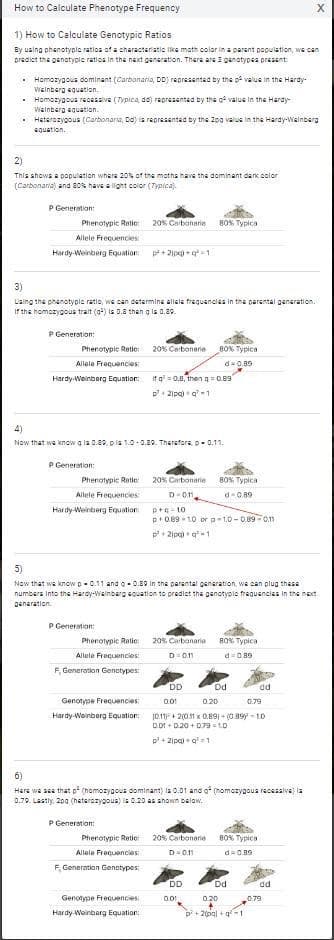Allele Frequency q Р Allele Moths d Genotype Frequency q² Typica 2pq Carbonaria p² Carbonaria D Genotype dd Dd DD Initial Allele Frequency Color Light Dark Dark 0.70 0.30 Moths Released 490 420 90 Initial Frequency 0.49 0.42 0.09 G5 Allele Frequency (Round to 2 decimal places) 0.91 Frequency G5 0.01 1.8 0.9 0.1 Number of Moths G5 848 838
Genetic Variation
Genetic variation refers to the variation in the genome sequences between individual organisms of a species. Individual differences or population differences can both be referred to as genetic variations. It is primarily caused by mutation, but other factors such as genetic drift and sexual reproduction also play a major role.
Quantitative Genetics
Quantitative genetics is the part of genetics that deals with the continuous trait, where the expression of various genes influences the phenotypes. Thus genes are expressed together to produce a trait with continuous variability. This is unlike the classical traits or qualitative traits, where each trait is controlled by the expression of a single or very few genes to produce a discontinuous variation.


We are given moths with DD, Dd and dd genotype. We have to calculate genotype frequency and allele frequency.
Trending now
This is a popular solution!
Step by step
Solved in 3 steps




